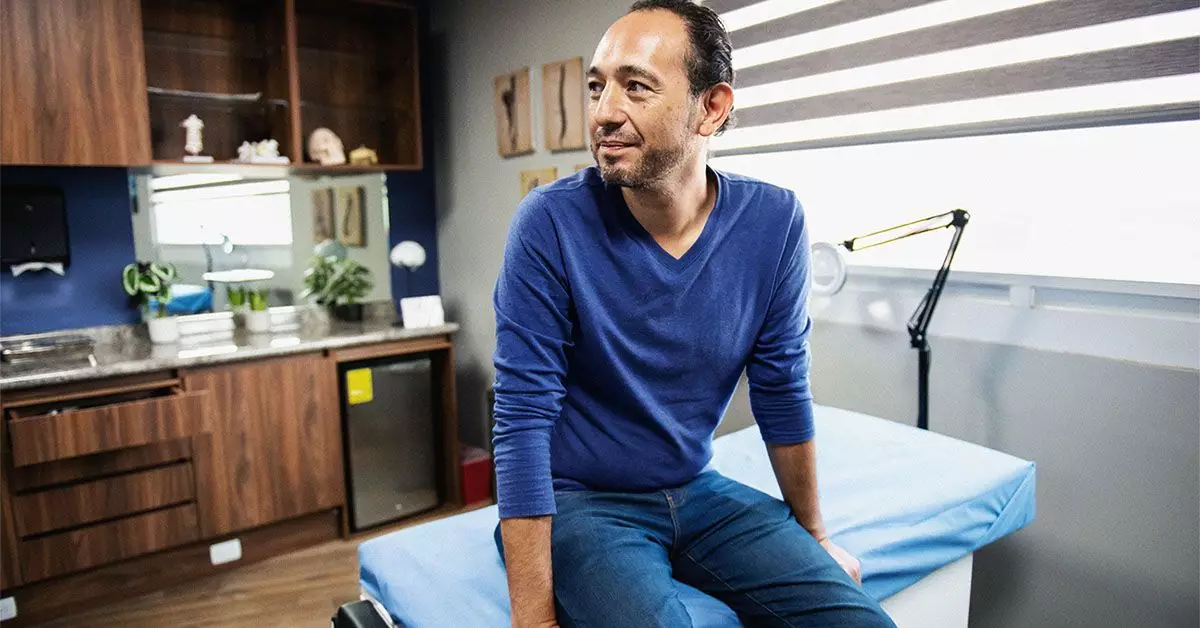The relationship between testosterone and prostate cancer has long been scrutinized by medical professionals and researchers alike. This dynamic interplay raises crucial questions surrounding hormone therapy and its implications for both cancer treatment and quality of life for those affected by prostate cancer. Here, we delve into the nuances of how testosterone influences prostate cancer, examine the multifaceted approaches of hormone therapy, and explore the ongoing debates surrounding testosterone replacement therapy.
At its core, testosterone is an androgen—a type of hormone critical to male development and health. While testosterone is essential for many bodily functions, it has been linked to the proliferation of prostate cancer cells. The concern is that testosterone, alongside other androgens such as dihydrotestosterone (DHT), can attach to specific proteins in prostate cells, activating genes that promote cell division and growth. This can happen in both healthy and malignant prostate cells, underscoring the complexity of managing testosterone’s influence in cancer scenarios.
As prostate cancer progresses, medical professionals often turn to hormone therapy to mitigate testosterone’s stimulatory effects on cancerous cells. This therapy aims to reduce androgen levels in the body or inhibit their interaction with prostate cells, thereby slowing or even shrinking tumor growth. Different methods are employed, including surgical interventions, medications, and a combination of both approaches.
Hormone therapy, frequently referred to as androgen deprivation therapy (ADT), employs several strategies tailored to an individual’s situation. The primary methods involve either lowering testosterone production or blocking its effects:
1. **Reducing Testicular Androgen Production**: One approach is to use medications known as luteinizing hormone-releasing hormone (LHRH) agonists and antagonists. These drugs can effectively diminish the hormones produced in the testes. Alternatively, orchiectomy—surgical removal of the testicles—offers a more permanent solution to reduce testosterone levels.
2. **Blocking Androgen Production Elsewhere in the Body**: Some medications can inhibit androgen synthesis beyond the testicles. Drugs like abiraterone (marketed as Zytiga) and ketoconazole (Nizoral) can disrupt hormone creation in other parts of the body, providing a broader approach to lowering androgen levels.
3. **Antagonizing Androgen Receptors**: Another strategy involves the use of anti-androgens, which prevent androgens from binding to the receptors on prostate cells. This action effectively nullifies their growth-promoting effects.
These treatment modalities are often used in conjunction with other therapeutic strategies, including radiation therapy or surgical options. The specific choice of hormone therapy and its timing can greatly affect treatment outcomes.
Given the apparent link between testosterone and prostate cancer growth, questions arise about the safety and implications of testosterone replacement therapy for those with low testosterone levels or conditions like hypogonadism. Historically, the fear has been that such treatments might increase the risk of developing or exacerbating prostate cancer. However, contemporary studies suggest that this correlation may not be significant.
Recent research indicates that testosterone replacement therapy does not raise the risk of prostate cancer for individuals who have a history of the disease. In fact, a segment of cancer survivors faces low testosterone levels due to turmoil caused by treatments like chemotherapy, leading to discussions about the potential benefits of testosterone therapy for mental and physical well-being, without fear of cancer recurrence.
Nevertheless, the ongoing debate persists. Some experts advocate for a cautious approach to initiating hormone therapy, highlighting potential side effects and the risks associated with long-term testosterone suppression. This perspective calls for close monitoring before committing to hormone-modulating treatments, particularly in cases of low-risk prostate cancer.
As the medical community continues to expand its understanding of the interactions between testosterone and prostate cancer, the strategies used to treat the disease also evolve. The relationship is delicate and multilayered, underscoring the need for personalized treatment plans that cater to the unique circumstances of each patient.
While widespread consensus remains elusive—particularly regarding the timing and appropriateness of hormone therapy—the shift towards a more nuanced understanding of testosterone’s role promises to enhance treatment approaches and patient outcomes. As research progresses, it will be essential for healthcare providers to remain informed and adaptable, ensuring that patients receive care that is both effective and sensitive to their specific health contexts.
The interplay of testosterone and prostate cancer necessitates ongoing dialogue and investigation. Hormone therapy stands as a critical tool in managing this disease, yet understanding its implications—especially concerning testosterone replacement therapy—will continue to shape the future of prostate cancer treatment.

